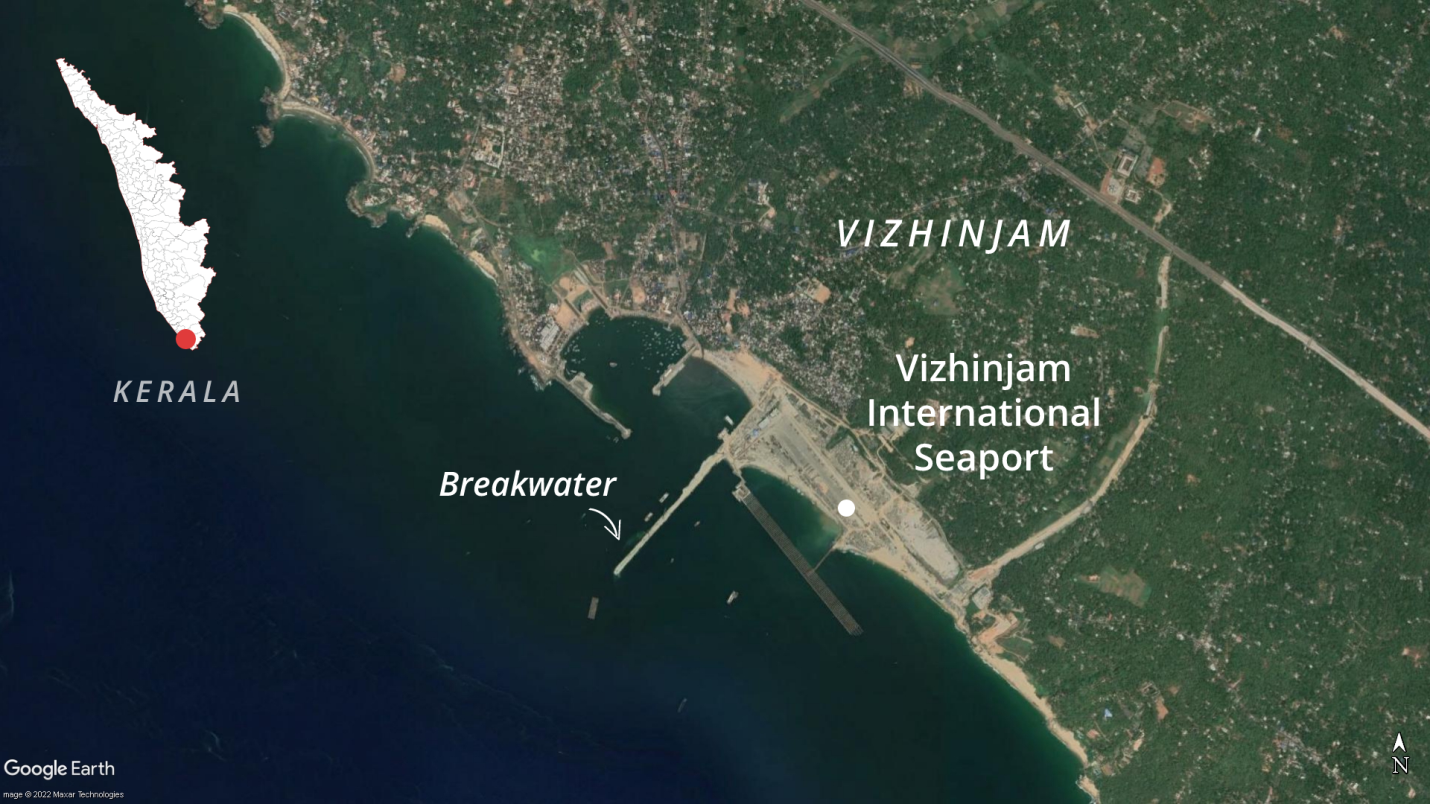





Copyright infringement not intended
Picture Courtesy: india.mongabay.com
Context: The Vizhinjam International Seaport Project aimed at building India's first international deepwater transhipment port.
Details
Significance of the Project
|
Addressing Infrastructure Gap |
●India lacked deepwater ports capable of handling ultra-large container ships, leading to a reliance on foreign ports for such operations. ●Vizhinjam offers a natural depth of over 18 meters, scalable to 20 meters. This depth is crucial for accommodating large vessels and mother ships effectively, making it an ideal port for handling significant maritime traffic. |
|
Transshipment Traffic |
●Historically, India relied heavily on transhipment services provided by ports in Colombo, Singapore, and Klang, leading to substantial forex expenditure. ●Developing Vizhinjam as a transhipment hub allows India to retain its transhipment business domestically. This reduces the need to divert traffic to foreign ports, leading to forex savings and boosting the national economy. |
|
Economic Impact |
●The project's modern infrastructure attracts FDI, injecting capital into the economy and fostering economic growth. ●Vizhinjam generates revenue through transhipment operations, taxes, and fees, contributing significantly to the state and central government finances. ●The development of supporting logistics infrastructure stimulates economic activities in related sectors, creating a multiplier effect on the economy. |
|
Competitive Advantage |
●Vizhinjam's strategic location makes it an attractive choice for shipping companies. Its proximity to international shipping routes enhances its appeal. ●The port's capability to handle Megamax container ships, some of the largest vessels in the world, gives it a competitive edge. This ability makes it a preferred choice for international shipping lines, ensuring a steady flow of maritime traffic. |
|
Job Creation |
●The project is expected to create 5,000 direct job opportunities, providing employment to the local population and boosting the region's economic stability. ●Improved logistics infrastructure leads to the growth of industrial corridors around the port, creating additional jobs in manufacturing, transportation, and related sectors. ●Enhanced port facilities benefit cruise tourism, creating employment opportunities in the tourism sector, including hospitality, entertainment, and travel services. |
Project Progress and Challenges
Conclusion
|
PRACTICE QUESTION Q. What are the key challenges faced by India in its maritime trade operations, and what strategies can the country implement to enhance its competitiveness and self-sufficiency in the global maritime industry? |








© 2025 iasgyan. All right reserved